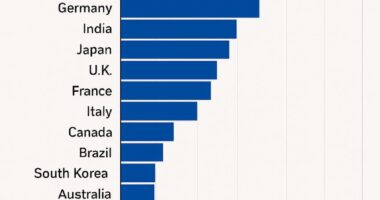Building wealth with index funds is one of the simplest, most effective strategies for long-term investors. With their low costs, broad diversification, and consistent market performance, index funds allow individuals to grow their wealth steadily while minimizing risk and fees. This guide explains how to use index funds to achieve financial independence efficiently.
Understanding Index Funds
What Are Index Funds?
An index fund is a type of mutual fund or exchange-traded fund (ETF) that tracks a specific market index, like the S&P 500 or Nasdaq Composite. Instead of relying on active managers to pick stocks, index funds passively mirror the performance of their chosen index, ensuring broad diversification and stable returns over time.
The Power of Passive Investing
Passive investing is based on the principle that most active managers fail to outperform the market once fees are accounted for. By eliminating constant trading and management overhead, index funds deliver higher net returns over time compared to actively managed funds.
Benefits of Building Wealth with Index Funds
Low Fees and Costs
The hallmark advantage of index funds lies in their low expense ratios. Many index funds charge as little as 0.05%, compared to over 1% for actively managed funds. Over decades, this difference can translate into hundreds of thousands of dollars in additional gains due to compounding.
For example, on a $100,000 investment earning 8% annually, the difference between paying 1.0% versus 0.10% in fees can exceed $220,000 after 30 years.
Broad Diversification
Index funds spread your capital across hundreds or thousands of securities. For instance, an S&P 500 index fund exposes you to 500 U.S. companies, reducing the risk of a single stock’s underperformance dragging down your portfolio.
Tax Efficiency
Because they track indices with minimal buying and selling, index funds generate fewer taxable events, leading to lower capital gains taxes compared to actively managed funds.
Simplicity and Transparency
Index funds are remarkably straightforward; you always know what you’re investing in since they replicate published indices. This transparency eliminates hidden risks that come with manager discretion.
How Index Funds Build Long-Term Wealth
Compounding Growth
Reinvesting dividends and letting your portfolio grow over decades allows compounding to work its magic. The reinvested gains generate new earnings, accelerating your wealth accumulation exponentially.
The formula for compound growth is:
A=P×(1+r)t
where A is the final amount, P the principal, r the annual return, and t the number of years invested.
Market Performance Consistency
Over any 20-year period, the vast majority of actively managed funds underperform their benchmarks after fees. Index funds, by contrast, essentially become the benchmark, ensuring steady returns that match overall economic growth.
Steps to Start Investing in Index Funds
Step 1: Choose the Right Brokerage Account
Opt for a commission-free brokerage that offers a selection of low-cost index funds. Many platforms like Vanguard, Fidelity, Schwab, and M1 Finance provide free ETF trading and automated reinvestment options.
Step 2: Define Your Investment Goals
Clarify your time horizon, financial goals, and risk tolerance. This helps you choose between stock index funds (growth) and bond index funds (stability).
Step 3: Select Your Index Funds
Look for funds that meet these criteria:
-
Low expense ratio (preferably below 0.1%)
-
Minimal tracking error (closely follows the benchmark)
-
Strong liquidity and volume for easier trades
-
High total assets under management (AUM) for credibility and stability.
Step 4: Automate Your Investments
Use dollar-cost averaging—investing a fixed amount regularly—to minimize the impact of market volatility. This disciplined approach ensures consistent buying, even during downturns, which can boost long-term returns.
How to Minimize Fees and Maximize Returns
1. Choose Ultra-Low-Cost Index Funds
Many top-tier index funds charge expense ratios of less than 0.05%. Compare providers using fee calculators and always opt for the lowest-cost fund tracking the same index.
2. Avoid High-Load Mutual Funds
Some mutual funds charge front-end or back-end load fees up to 5.75%, which diminish your investment before compounding can begin. No-load index funds are the better choice.
3. Limit Trading Activity
Frequent trading leads to unnecessary transaction costs and capital gains taxes. Adopt a “set it and forget it” strategy to keep your money compounding automatically.
4. Use Fee Comparison Tools
Platforms and tools provided by brokerages allow side-by-side comparisons of fund expense ratios, advisory costs, and trading fees. Regularly review your statements for any hidden fees.
5. Diversify Across Asset Classes
Balancing stock, bond, and international index funds reduces risk and may improve returns. For instance, combining a U.S. total market fund with a global bond fund can create a more resilient portfolio.
Common Mistakes to Avoid
Chasing Market Trends
Attempting to switch between sectors or jump into “hot” funds typically backfires. Index investors gain the best results by staying consistent and long-term focused.
Ignoring Fund Performance Tracking
While index funds aim to mirror their benchmarks, minor differences—called tracking errors—can occur. Periodically verify that your fund accurately tracks its intended index.
Not Reinvesting Dividends
Failing to reinvest dividends can stunt compounding. Always enable automatic dividend reinvestment to keep your portfolio growing efficiently.
Sample Long-Term Wealth Strategy
For a balanced, fee-efficient portfolio, consider this allocation:
| Asset Type | Example Fund | Expense Ratio | Purpose |
|---|---|---|---|
| U.S. Stock Index | Vanguard Total Stock Market ETF (VTI) | 0.03% | Growth and diversification |
| International Stock Index | iShares Core MSCI Total Intl Stock ETF (IXUS) | 0.07% | Global exposure |
| U.S. Bond Index | Schwab U.S. Aggregate Bond ETF (SCHZ) | 0.04% | Stability and income |
This portfolio offers broad diversification while maintaining total expense ratios under 0.05%, minimizing friction on returns.
Conclusion: The Road to True Financial Freedom
Index funds make wealth building attainable for anyone. Their low fees, diversification, and predictable performance embody the wisdom of investing for the long term. By focusing on minimizing costs, staying patient, and letting compounding work, investors can steadily achieve life-changing financial growth.
Whether you’re starting with $100 or building a $1 million portfolio, the principles remain the same: invest consistently, minimize fees, and stay the course. Over time, these habits compound into lasting wealth and financial independence









